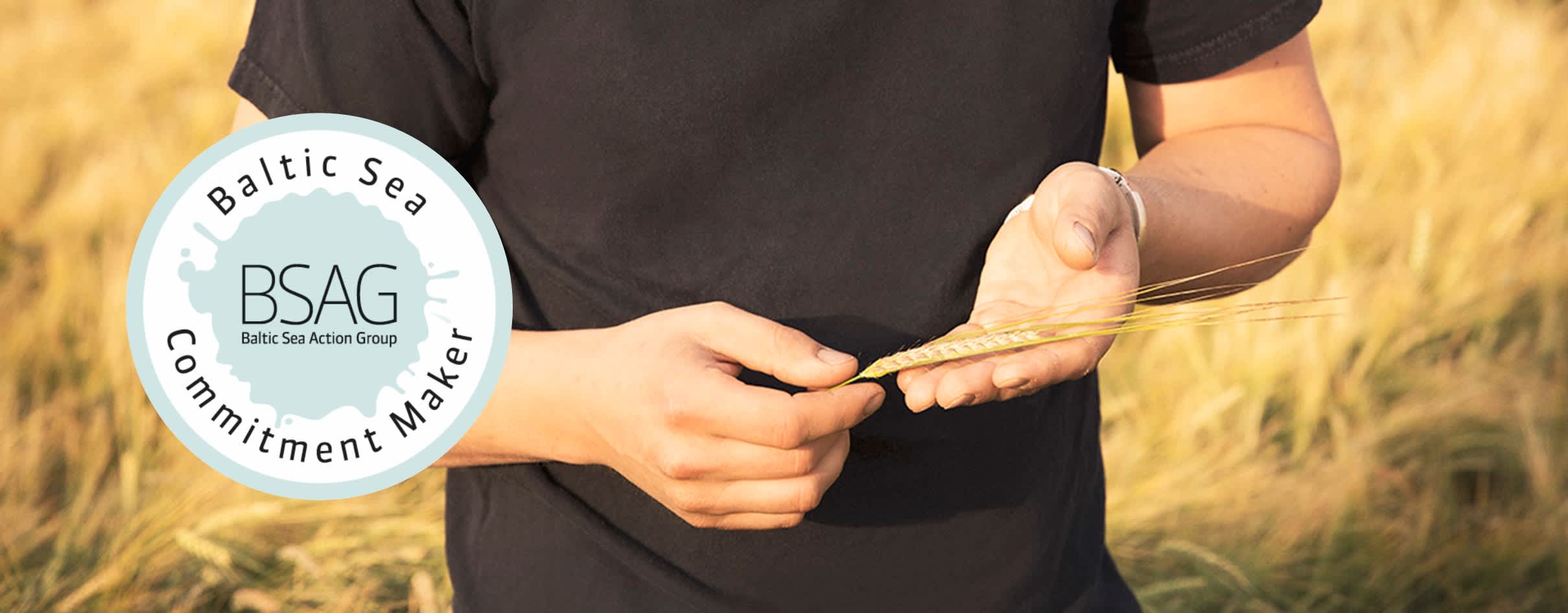
Sustainable cultivation methods are being tested in the fields of Anora's contract farmers
The Carbon Action initiative strives to enhance sustainable soil management and carbon farming. The pilot stage started in summer 2019 in the fields of selected contract farmers who grow barley for Anora. The five-year project is designed to find out what kind of cultivation practices could help to store more carbon in the soil.
In September 2018, Anora made a new Baltic Sea commitment to promote the sustainability of its cultivation methods. This commitment is a continuation of Anora's cooperation with the Baltic Sea Action Group (BSAG), which started in 2015.
As part of the new Baltic Sea commitment, Anora and selected contract farmers participate in the Carbon Action initiative, a joint project between the BSAG and the Finnish Meteorological Institute. The initiative studies how climate change and the eutrophication of the Baltic Sea can be controlled by improving soil health and by storing carbon in the soil through more effective farming practices.
Developing sustainable cultivation practices is very important to Anora, as the company’s Koskenkorva distillery in Ilmajoki, Finland uses over 210 million kilos of Finnish barley per year. The grains are sourced from 1,400 farms.
Collection of soil samples to determine the baseline situation
Altogether more than one hundred farms representing different production branches from all over Finland are participating in the study. Anora's contract farms are also located in different parts of the country, operating in different conditions.
“The research work at the farms started in summer 2019 with the collection of soil samples to determine the baseline situation. The soil samples will be retaken in five years to determine the effect of the measures taken. The carbon farms also started implementing the project measures in their test plots over the summer”, says BSAG CEO Michaela Ramm-Schmidt.
“All farms participating in the project are divided into groups, and each group tests a variable number of different methods. This way we find out how effective each method is on its own and how they work together, so we can determine the right measures for the local conditions”, she explains.
The measures are grouped into three main categories
The measures are grouped into three main categories. In the first category, the objective is to ensure that the plant cover is as broad as possible to maximise photosynthesis, a process in which the crops absorb carbon. This can be achieved by increasing winter cover and including winter cereals and grasses in the crop rotation, for instance.
In the second category, the composition, humus content and health of the soil is improved by cultivating more deep-rooted crops and by increasing the use of animal manure and different recycled fertilisers, as this helps to improve the conditions for the key microbes involved in carbon sequestration. The third category consists of measures to reduce tilling.
One goal is to find out how much carbon is stored in the undersown crops
Anora's contract farmer Pasi Ketelä from Ilmajoki is testing the use of catch crops, undersown crops and deep-rooted crops to sequester carbon in his field. He is using identical strategies to cultivate barley in two plots, one of which is undersown with deep-rooted crops.
“The goal is to find out how much carbon is stored in the undersown crops, which continue to grow even after threshing”, Ketelä explains.